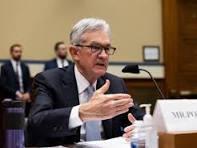
Keeping Score – A Running Record of My Interest Rate and Fixed Income Guidance Since 2020
By John H. Robinson, Financial Planner (June 2024)
In a recent introductory meeting, a prospective client asked why they should follow my guidance on interest rates. This challenge to my credibility was a legitimate question, particularly since my guidance on this topic frequently runs counter to the prevailing "wisdom" in the financial news media. I thanked the fellow for speaking up because it afforded me an excellent opportunity to outline my guiding investment principles.
I began by explaining that I do not comment on or make predictions about the direction of the stock market. While there are fundamental reasons why the stock market generally rises over time, over the short term it follows a random walk (i.e., it defies prediction). However, interest rates and the bond market do not follow a random walk, and I contend that the direction of interest rates over the past five years has been uniquely predictable.
To be clear, I claim no specialized knowledge or expertise. All the guidance I provided over the past five years has been based on common sense, 34 years of investment experience, and simply listening to the Fed’s public statements about its views on inflation and its intentions for interest rates. Although I do not pretend to be a "bond market guru," it is puzzling to me how many investment professionals who do claim that moniker thought intermediate and long-term bond funds would be a good investment in 2021 and 2022 when rates were at their lowest levels in history and could simply not go lower. It is similarly befuddling how so many intelligent, experienced bond traders continue to ignore the Fed's guidance through the first half of 2024.
Since there is no shortage of charismatic gurus who excel at making predictions in hindsight, I believe it is important to document the specific fixed-income guidance I have given over the past five years. For anyone interested in fact-checking, below are links to all of the articles I have posted on this topic since mid-2020 and the dates the articles were published. Anyone who takes the time to check the dates of my guidance relative to the interest rate changes that followed will find that my guidance has been consistently prescient (i.e., I have not been driving through the rearview mirror).
Do The Bond Market Experts Ever Get Tired of Being Wrong? (5/28/2024)
I find it positively baffling that so many people whom the financial media have anointed as bond market experts continue to listen to the Fed’s public statements and interpret them to mean that a series of sharp rate cuts are coming soon.
Such persistent wishful thinking reminds me of an iconic scene in the comedy cult classic “Dumb and Dumber” in which an attractive FBI agent responds to Jim Carrey’s character’s request for a date by telling him that the odds of her going out with him are “one in a million.” To which Carry gleefully replies, “So you’re telling me there’s a chance!”
Where to Fish for the Best Fixed Income Yields Today (3/4/2024)
The driver of the plunge in yields last November was the media’s baffling interpretation of Federal Reserve Chairman’s comments at the Fed’s November and December Open Markets Committee meetings. In both of his press meetings, Mr. Powell indicated that the Fed was taking a wait-and-see approach on inflation and that it could not rule out future increases…
…I continue to be baffled by bond investors’ reactions to Powell’s commentaries. The man has no reason to lie. Ever since the days of Alan Greenspan, the Fed Chairmen have tried to be as clear and transparent as possible. When Mr. Powell suggests that the Fed has not yet even decided to stop raising rates, it would be wise to believe him. This unfortunate reality is beginning to set in with the wishful thinking crowd who have been hoping against hope that the fed was poised to cut rates three times in 2024.
Interest Rates on CDs Plummeted in November. How to Invest Now (12/3/2023)
The opposing view (and the one to which I subscribe) is that interest rates and inflation will remain higher than most consumers expect and longer-term rates will continue to rise in reluctant acknowledgment.
How to Invest When the Yield Curve is Inverted (9/8/2023)
However, an alternative outcome that does not receive as much attention is that inflation may prove more stubborn than anticipated.
In my opinion, this [advice to invest in bond mutual funds] is a foolish play, as it completely discounts the alternate scenario. If inflation persists, those same bond fund holders who got burned in 2022 will get burned again as the reversion to the normal yield curve shape is fueled by rising long term rates. My advice is the same as always – friends don’t let friends buy bond funds. The laddering strategy outlined above will typically capture most of the yield at the highest point of the yield curve and enables investors to avoid negative nominal returns by holding to maturity.
It's Time to Start Laddering Certificates of Deposit Again (5/21/2023)
In a December 2022 FPH Blog post, I specifically recommended extending maturities to make the year at the end of the ladder match the CD yield once the long yield hit 5%. We have now reached that point. Thus, for clients who may be sitting on cash or have bonds or CDs maturing, I recommend staggering/”laddering” maturities in 6-12 month increments out to five years at 5%.
I Was Right About Interest Rates…And Why That is Important Now (9/29/2022)
This is Why Friends Don’t Let Friends Buy Bond Funds (Mar 2022)
I wrote these articles before interest rates started to rise…
Saying that the Bull Market in Bonds is Over is NOT Market Timing (12/10/2021)
Negative Returns Ain't Much of Living (August 2021)
Looking for Yield in All the Wrong Places (May 2021)
How to approach current low interest rates (Keep it in cash) (8/30/2020)
My Current Advice - Still Listening to the Fed ("Don't Fight the Fed")
While I have been vocal in calling out "experts" for urging consumers to jump back into bond funds in anticipation of near-term rate cuts, I certainly acknowledge that the Fed will eventually be inspired to cut rates in the face of tamed inflation. The rate cuts may or may not begin later this year. However, if/when the Fed cuts rates, I doubt the cuts will be steep and I doubt there will be multiple cuts in short succession. Similarly, I believe it is highly unlikely the Fed will cut rates to anything close to the generational lows of 2021. Realistically 4%-6% short-term yields are in line with historical norms and are probably where rates should settle out once the Fed accomplishes its inflation-quashing mission.
Longer-term rates on bonds and mortgages should probably settle in the 6-8% range. 30-year mortgages at 2.75% and the 30-year treasury at 1.4% will likely prove to be a generational anomaly. As a practical matter investors and lenders need to earn a higher rate in return for tying up their money for long periods of time. Again, this view is not rooted in clairvoyance. It is rooted in common sense. It is important to note that this perspective is not my unique interpretation. In fact, I am merely parroting back the guidance that the Fed is giving. Here are two quotes from Fed Chairman Jerome Powell's July 15 (2024) public comments -
"What we've said is that we didn't think it would be appropriate to begin to loosen policy until we had greater confidence" that inflation was returning sustainably to 2%, Powell continued. "We've been waiting on that. And I would say that we didn't gain any additional confidence in the first quarter, but the three readings in the second quarter, including the one from last week, do add somewhat to confidence."
“I’m not going to be sending any signals one way or another on any particular meeting. We’re going to make these decisions meeting by meeting.”
John H. Robinson is the owner/founder of Financial Planning Hawaii and Fee-Only Planning Hawaii. He is also a co-founder of fintech software maker Nest Egg Guru and the new personal finance website NestEggPF.com.

